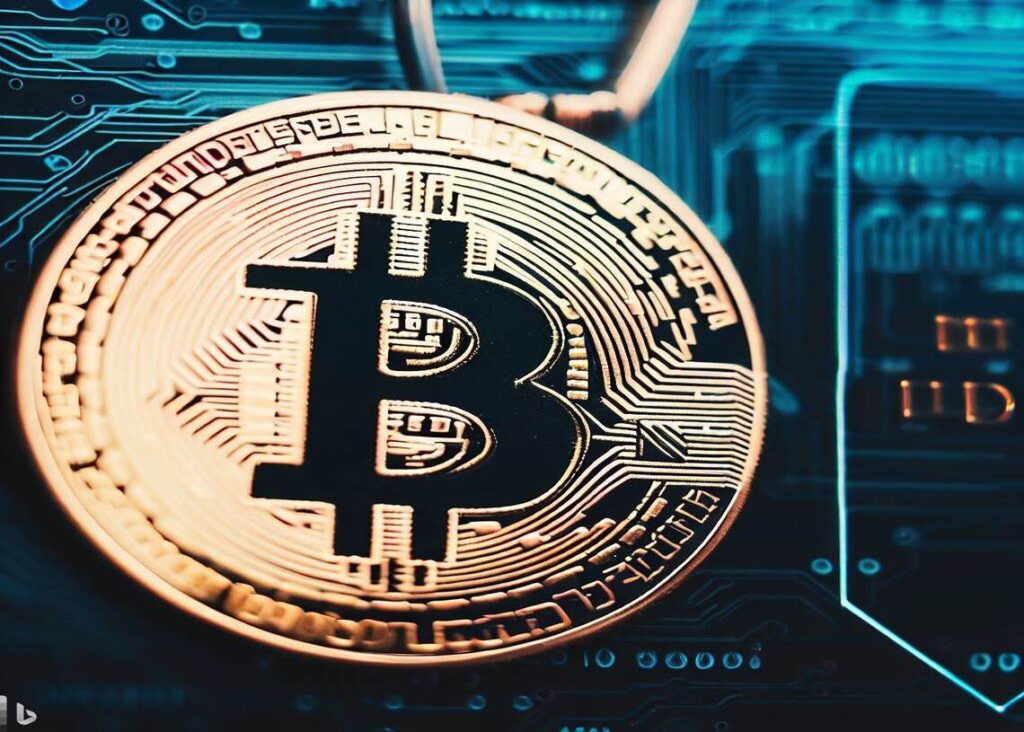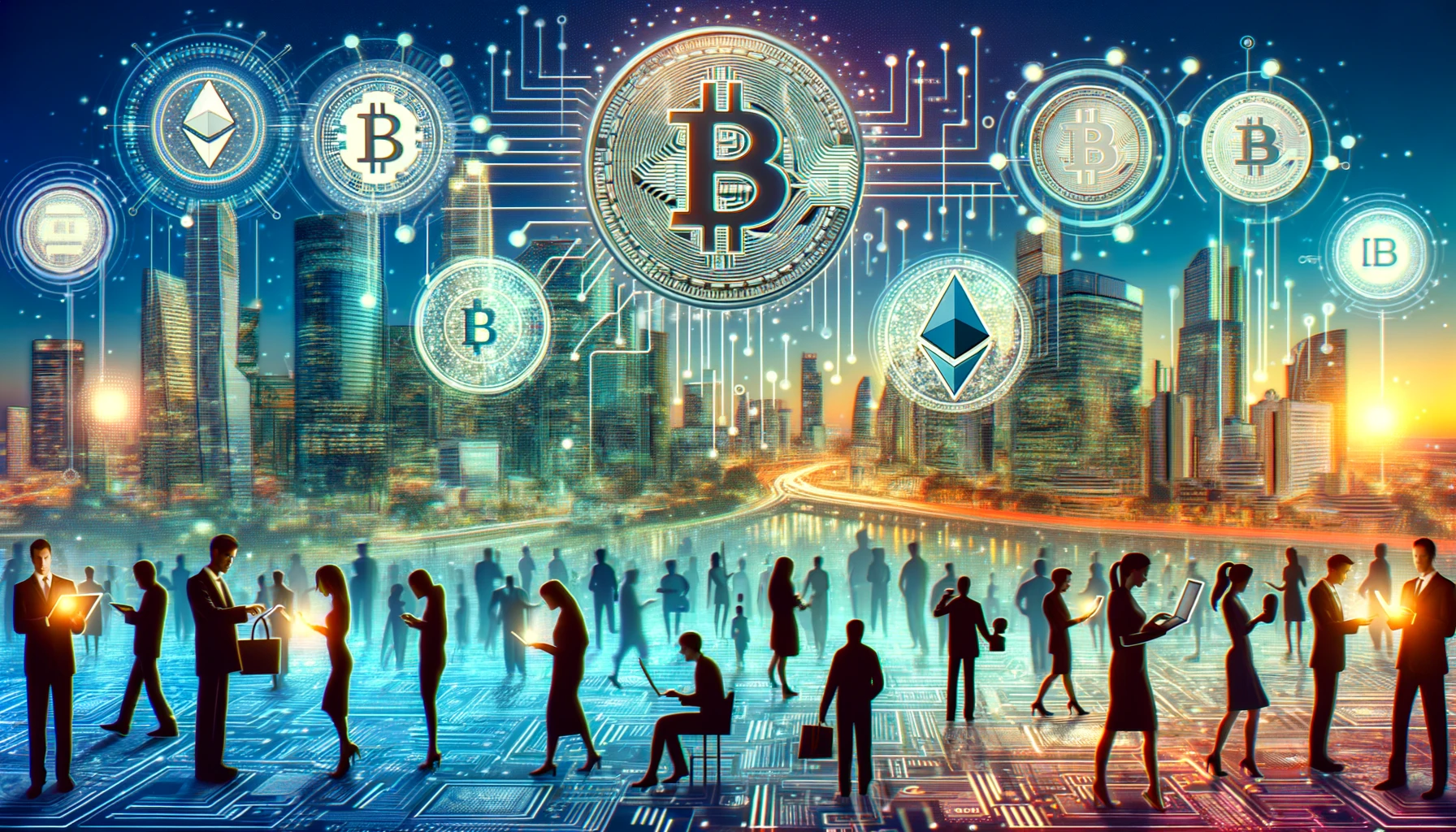Table of Contents
Introduction
Bitcoin, the world’s leading cryptocurrency, relies on a decentralized network of computers to enable secure and transparent transactions. Every Bitcoin transaction is uniquely identified by a transaction ID, commonly referred to as a TXID or transaction hash. This alphanumeric string serves as a digital fingerprint for each transaction, providing a way to trace and verify the movement of funds on the blockchain.

What is a Bitcoin Transaction ID, and how does it work?
A Bitcoin transaction ID is a 64-character hexadecimal string representing a specific Bitcoin blockchain transaction. It serves as a digital signature and provides an immutable record of the transaction’s details, including the sender’s and recipient’s addresses, the amount transferred, and other relevant information.

Source: Bing
When a Bitcoin transaction is initiated, it includes various details such as the sender’s address, the recipient’s address, the amount of Bitcoin being transferred, and additional transaction information. This data is bundled together and processed by Bitcoin miners who validate and confirm the transaction.
Once the transaction is confirmed by miners and added to a block on the blockchain, it is assigned a unique TXID. This ID is a long string of alphanumeric characters acting as a digital fingerprint for that transaction. It is generated through cryptographic algorithms applied to the transaction data.
The TXID is crucial for transaction verification and serves as proof of the transaction’s existence on the blockchain. It allows users to look up and verify the status and details of a specific transaction, such as its confirmations, timestamp, and other relevant information.
Bitcoin users can find the TXID associated with their transactions using blockchain explorers, which are online tools that allow users to search and view transaction details on the blockchain. By entering the sender’s or recipient’s Bitcoin address or other transaction details, users can locate and track the corresponding TXID.
A Bitcoin Transaction ID uniquely identifies and traces transactions on the Bitcoin network, ensuring transparency and immutability within the decentralized ledger.
Importance of Bitcoin Transaction IDs
Bitcoin transaction IDs, also known as transaction hashes, play a crucial role in the Bitcoin network. They are alphanumeric strings uniquely identifying each transaction and serving several important purposes. Here are some of the key reasons why Bitcoin transaction IDs are important:
- Verification and Confirmation: Bitcoin transaction IDs enable participants in the network to verify and confirm the validity of transactions. Each transaction ID is generated through a cryptographic process, ensuring its uniqueness and integrity. Participants can use these IDs to independently verify that a specific transaction has taken place on the blockchain.
- Transparency and Auditability: Bitcoin’s blockchain is a public ledger that records all transactions. Transaction IDs allow anyone to track and examine transactions on the blockchain, providing transparency and enabling audibility. By searching for a transaction ID, users can view the details of a specific transaction, including the sender, recipient, amount, and other relevant information.
- Transaction Tracking: Transaction IDs are essential for tracking the progress of Bitcoin transactions. Since transactions are added to blocks in a sequential manner, each transaction ID represents a specific position in the blockchain’s transaction history. Users can monitor the status of their transactions by checking the blockchain explorer or using wallet software that tracks the confirmation progress based on the transaction ID.
- Dispute Resolution: In case of a dispute or disagreement regarding a transaction, the transaction ID serves as an important reference point. It allows parties involved to provide evidence of the transaction’s occurrence and traceability. By presenting the transaction ID, users can demonstrate that a particular transaction has been initiated and broadcasted to the network.
- Security and Anti-Fraud Measures: Transaction IDs contribute to the security of the Bitcoin network by providing a way to identify and prevent fraudulent activities. Users can detect suspicious or malicious behavior by examining the transaction history associated with a specific ID. Moreover, transaction IDs are used in the context of multi-signature transactions and can be employed to enforce security measures and prevent unauthorized access.
- Integration with Exchanges and Services: Bitcoin transaction IDs are integral to the integration of Bitcoin with various exchanges, wallets, and other services. When users deposit or withdraw funds from an exchange, the transaction ID is often required to track and process the transaction. Similarly, merchants and service providers verify and reconcile payments using transaction IDs.
In summary, Bitcoin transaction IDs serve as unique identifiers that facilitate verification, transparency, tracking, dispute resolution, security, and integration with other services. They are an essential component of the Bitcoin network, providing a reliable and immutable record of transactions.
How to Find a Bitcoin Transaction ID?
To find a Bitcoin transaction ID (also known as TXID or Transaction Hash), you need to follow these steps:
- Access your wallet: Open the Bitcoin wallet where you sent or received the transaction. This could be a hardware wallet, software wallet, or an exchange platform.
- Locate the transaction: Search for the specific transaction in your wallet’s transaction history. This is usually found under sections like “Transactions,” “History,” or “Activity.”
- Find the transaction details: Click on the specific transaction you want to find the ID for. This will open a window with more information about the transaction.
- Copy the transaction ID: In the transaction details, look for the Transaction ID, TXID, or Transaction Hash. It is a long alphanumeric string, typically 64 characters in length. Copy this string, as it serves as the unique identifier for your transaction on the blockchain.
- Verify on a block explorer (optional): To confirm the transaction details further, you can paste the transaction ID into a Bitcoin block explorer like Blockchain.com Explorer or Blockchair. This will show you the transaction’s status, confirmations, inputs, outputs, and other relevant information.

Source: Bing
Transaction ID formats may vary slightly depending on your wallet or platform. However, the general process of finding a Bitcoin transaction ID should be similar across most platforms.
Exploring the Components of a Bitcoin Transaction ID
A Bitcoin transaction ID comprises several components, each contributing to its uniqueness and identification. Let’s explore these components in detail:
Block Height
The block height indicates the position of a transaction within the blockchain. It represents the sequential order of the block that contains the transaction, starting from the Genesis Block, which has a block height of 0.
Block Hash
The block hash is a unique identifier for a specific block on the blockchain. It ensures the integrity and immutability of the block’s data and serves as a reference for the transaction ID.
Transaction Index
The transaction index denotes the position of a transaction within a block. It distinguishes multiple transactions within the same block and helps identify each transaction uniquely.
Output Index
The output index specifies the position of a specific output within a transaction. A transaction may have multiple outputs, allowing funds to be sent to different addresses simultaneously. The output index ensures the identification of each output within a transaction.
Verifying Bitcoin Transactions with Transaction IDs
Verifying Bitcoin transactions with transaction IDs is essential to ensuring the validity and security of transactions on the blockchain. A transaction ID, also known as a TXID or transaction hash, is a unique string of alphanumeric characters that identifies a particular Bitcoin transaction.
To verify a Bitcoin transaction using its transaction ID, you can follow these steps:
- Locate the transaction ID: You should receive the transaction ID from the sender or recipient of the transaction, or you can find it in your wallet’s transaction history.
- Use a block explorer: A block explorer is a search engine for the blockchain that allows users to explore transactions, addresses, and blocks. Some popular block explorers include Blockchair, Blockchain.com Explorer, and Blockstream Explorer.
- Search for the transaction ID: Enter the transaction ID into the search bar of the block explorer you have chosen and press “Enter” or click the search button.
- Review the transaction details: The block explorer will display the transaction details, including the sender’s address, the recipient’s address, the amount transferred, and the number of confirmations. The more confirmations a transaction has, the more secure it is.
By following these steps, you can verify the status and details of a Bitcoin transaction using its transaction ID. Remember that transactions on the Bitcoin network are irreversible, so always double-check the information before sending or receiving funds.
Common Issues and Troubleshooting
Bitcoin transactions are generally reliable and secure, thanks to the blockchain technology that underpins the digital currency. However, there are instances when users may encounter issues with Bitcoin transaction IDs. Here are some common problems and troubleshooting tips to help resolve these issues:
- Unconfirmed Transactions: Sometimes, a Bitcoin transaction may remain unconfirmed for an extended period, causing delays in the funds reaching the intended recipient. Troubleshooting: Check the transaction fee you’ve included in your transaction. If it’s too low, miners might prioritize other transactions over yours. In this case, you can either wait for the transaction to confirm or attempt to replace the transaction with a higher fee (Replace-By-Fee method).
- Transaction Not Found: You may be unable to find your transaction ID on a block explorer. Troubleshooting: Ensure that you’ve entered the correct transaction ID. If the transaction is still not encountered, it might have been dropped from the mempool due to low fees or network congestion. You can try resending the transaction with a higher price in this situation. Use a reliable block explorer to search for your marketing.
- Double Spend Detected: A double-spend occurs when someone tries to spend the identical Bitcoin twice, which is not allowed by the blockchain protocol. Troubleshooting: If you’re the sender, ensure you haven’t accidentally sent duplicate transactions. If you’re the recipient, wait for more confirmations before considering the transaction final. If the transaction remains unconfirmed, one of the transactions will likely be dropped from the network. You can learn more about double-spending here.
- Stuck Transactions: A transaction can become stuck if it has been in the mempool for an extended period without being confirmed. Troubleshooting: Similar to unconfirmed transactions, you can either wait for the transaction to confirm or attempt to replace the transaction with a higher fee using the Replace-By-Fee method.
- Incorrect Transaction Details: Mistakes can happen when entering the recipient’s address or the amount of Bitcoin to be sent. Troubleshooting: Unfortunately, once a transaction has been broadcasted to the network, it cannot be reversed or modified. Always double-check transaction details before sending them. You can use tools like Bitcoin Address Checker to verify the address.
- Wallet Sync Issues: Your wallet might not display the correct transaction details or balance if it’s not fully synced with the blockchain. Troubleshooting: Ensure your wallet is updated and synchronized with the latest blockchain data. You can also try refreshing or rescanning your wallet to ensure it reflects the most recent transactions. For more information, refer to your wallet provider’s guidelines or visit this resource.
Security Considerations for Bitcoin Transaction IDs

As with any digital asset, security is paramount when dealing with Bitcoin transaction IDs. Here are a few essential security considerations:
- Keep your transaction IDs private and avoid sharing them publicly.
- Safeguard your wallet’s private keys to prevent unauthorized access.
- Be cautious of phishing attempts or fraudulent websites that may deceive you into revealing your transaction ID or other sensitive information.
- Regularly update your wallet software to benefit from the latest security enhancements.
- Consider using hardware wallets or other offline storage options for enhanced security.
FAQs
What happens if I lose my Bitcoin transaction ID?
Losing a Bitcoin transaction ID can be challenging since transaction IDs are immutable once recorded on the blockchain. If you lose the transaction ID, try to access it through your wallet’s transaction history or contact the wallet provider’s support for assistance.
Can Bitcoin transaction IDs be forged or manipulated?
Bitcoin transaction IDs are generated using cryptographic algorithms, making them extremely difficult to forge or manipulate. The decentralized nature of the blockchain network ensures the integrity and immutability of transaction IDs.
Can I change a Bitcoin transaction ID?
No, you cannot change a Bitcoin transaction ID once it is recorded on the blockchain. The blockchain’s immutability ensures that transaction IDs remain fixed and cannot be altered or tampered with.
Are Bitcoin transaction IDs case-sensitive?
Yes, Bitcoin transaction IDs are case-sensitive. Ensure that you enter the ID correctly, considering uppercase and lowercase letters.
How long does a Bitcoin transaction ID remain valid?
Bitcoin transaction IDs remain valid indefinitely. Once a transaction is confirmed and recorded on the blockchain, its transaction ID becomes a permanent record.
Can I track the recipient of a Bitcoin transaction?
Bitcoin transactions are pseudonymous, meaning that while transaction IDs provide transparency, they do not directly reveal the identities of the sender or recipient. Additional information or investigative techniques may be required to track the recipient of a Bitcoin transaction.
Are Bitcoin transaction IDs reversible?
Bitcoin transaction IDs are not reversible. Once a transaction is confirmed and recorded on the blockchain, it becomes an immutable part of the transaction history.
Can I use a Bitcoin transaction ID to trace the sender?
Bitcoin transaction IDs provide limited information about the sender, primarily their Bitcoin address. However, tracing the sender’s identity requires additional investigation and analysis beyond the transaction ID.
Are Bitcoin transaction IDs private?
Bitcoin transaction IDs are not private since they are publicly recorded on the blockchain. However, the identities of the individuals behind the transactions are pseudonymous, providing a certain level of privacy.
Can Bitcoin transaction IDs be reused?
Bitcoin transaction IDs are unique to each transaction and cannot be reused. Once a transaction is confirmed, a new transaction ID is generated for subsequent transactions.
Conclusion
Bitcoin transaction IDs are vital components of the cryptocurrency ecosystem, ensuring the integrity, traceability, and verification of transactions. Understanding how transaction IDs work and their significance can enhance your knowledge and experience with Bitcoin. By following best practices for security and staying informed about common issues, you can navigate the world of Bitcoin transaction IDs confidently.















Leave a Reply